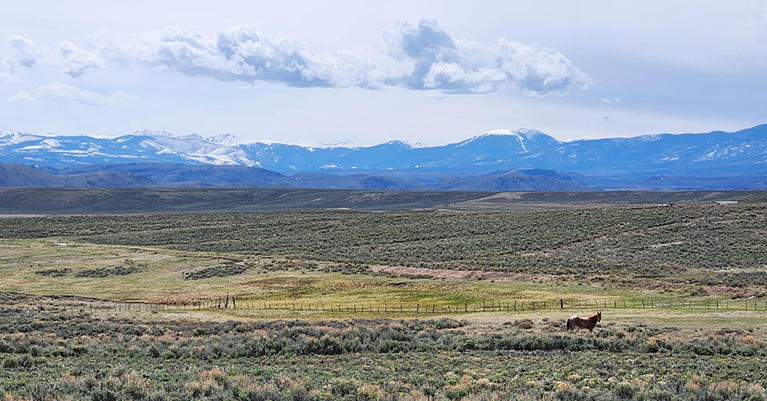Note: Due to the uncertainties at the Federal level, certain links may be temporarily or permanently inactive.
The Infrastructure Investment and Jobs Act (IIJA), the Inflation Reduction Act (IRA), and the CHIPS and Science Act, authorized over $1.2 trillion in funding for transportation, energy, water, broadband and other infrastructure. With 45% of that funding ($464 B) being highly significant to rural places and 2% of this federal funding appropriated exclusively to rural places, the funding presents an immense opportunity for many rural communities, who often face a gap in employment, education, and poverty from their metro counterparts and face greater risk from climate disasters.
Unfortunately, many rural communities are continuing to experience challenges in being able to apply for the crucial Federal support.
“Small local governments express concerns around competing for grants with one another, the time and lift that federal applications take. The reality is, many are reimbursement grants for which smaller communities are unable to front the kind of funding it would take to pursue the grants to begin with. These factors make many local governments feel like the grants were not actually designed for them to pursue,” says Snow Staples, Federal Funding Coordinator at the Department of Local Affairs (DOLA). “Then of course there are capacity concerns around applying for the funds, and managing the funds.”
Local match requirements also create barriers for rural communities applying for federal grants. According to a December 2023 report by the Brookings Institution, over 50% of the rural-significant programs require or prefer matching funds, with almost 95% of the rural exclusive funds requiring or preferring a match. Less than one-third of rural exclusive and rural stipulated programs offer match waivers or flexibility. In addition, local match requirements are typically structured as a percent of project costs, without taking into account the community’s size, economic position, or that projects can be more expensive in rural areas, with fewer resources and smaller populations to share the burden than urban areas.
Finally, there is no single rural policy across federal agencies to provide unified guidance to rural communities. This includes complicated and sometimes conflicting eligibility requirements, spending formulas, and even definitions of what rural even means.
While changes to funding programs processes that are more inclusive of rural places may be slow to take a foothold, rural communities can consider several options when pursuing a federal grant. The Department of Local Affairs (DOLA) and other State of Colorado resources are available to build capacity for grant applications and subsequent grant and project management. These include the Local Match Program, Regional Managers, Regional Grant Navigators, and several grant writing programs. Check out the compiled list of DOLA and State capacity building resources:
Capacity Building Resources Showcase
Did you Know?
Improving more equitable access to federal funding is an evolving process. In addition to a variety of DOLA and State technical assistance programs, there are also Federal resources available that can help local governments apply for funding. Some agencies are waiving local match requirements for certain programs and broadening the types of local government contributions that qualify towards the match. Many rural significant programs qualify for the Justice 40 initiative, in which 40 percent of the overall benefits of certain Federal climate, clean energy, affordable and sustainable housing, and other investments flow to disadvantaged communities that are marginalized by underinvestment and overburdened by pollution.
Finding Federal Grant Opportunities
Local Community Funding Guide - While the Department of Local Affairs’ (DOLA) Division of Local Government (DLG) created and maintains this resource, it is comprehensive across all State agencies. The guide includes funding sources to help local governments and nonprofit community organizations navigate the funding sources available through a variety of Federal and State programs.
While there are many IIJA/IRA funding search tools available, they can be overwhelming and often confusing. Here are two of our favorites:
Federal Technical Assistance Guide
The White House produced a technical assistance guide (temporarily unavailable)along with a sortable spreadsheet (temporarily unavailable) to help applicants identify technical assistance programs by agency and grants. These vary from direct assistance, to funding for technical assistance, to educational opportunities, and more.
Dive Deeper
For a better understanding of the challenges rural communities face in taking advantage of federal funding, check out out the following resources:
- Why rural communities struggle to bring in much-needed federal grants - High Country News
- Rural Communities Can Benefit From Infrastructure Funds—if Rollout Is Done Right - Center for American Progress
- Rural Capacity Map - Headwaters Economics
- In It for Rural Resources: A ROADS Event Recap - Aspen Institute Community Strategies Group
To see more resources that can help rural communities with economic development apply for funding:
- Resources for Rural Communities
- Federal Energy Funding for Rural and Remote Areas: A Guide for Communities
- The Path to Rural Resilience in America - Center for American Progress
- Bipartisan Infrastructure Law Rural Playbook (temporarily unavailable)
Local Government Resources Call
DOLA’s monthly webinar series is focused on funding navigation featuring speakers who are intimately familiar with the Federal and State funding opportunities they are presenting, and who offer tips and resources that make it easier for local communities to pursue. The May 2024 call focused on grant application best practices. Upcoming topics include:
- Capacity Building Resources for Small Communities - August 21, 2024
- Housing, Transit Oriented Development, and Smart Growth - September 18, 2024
- Grant Implementation and Monitoring - October 16, 2024
- Land, Water, and Wildlife Funding - November 20, 2024
